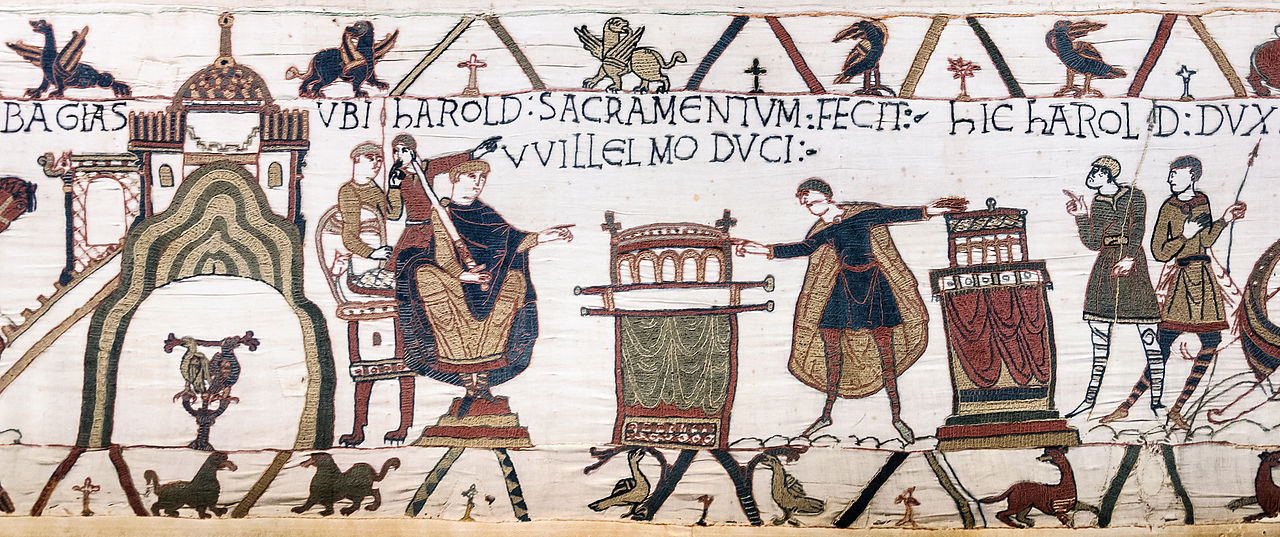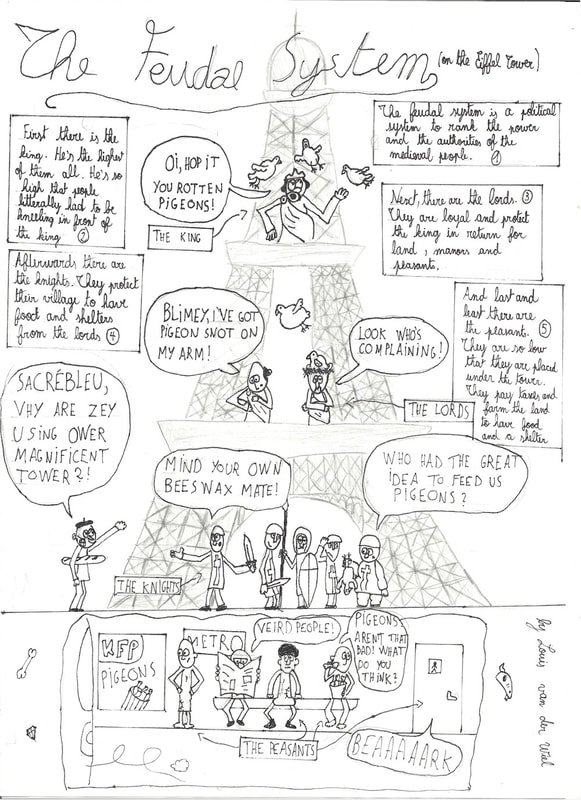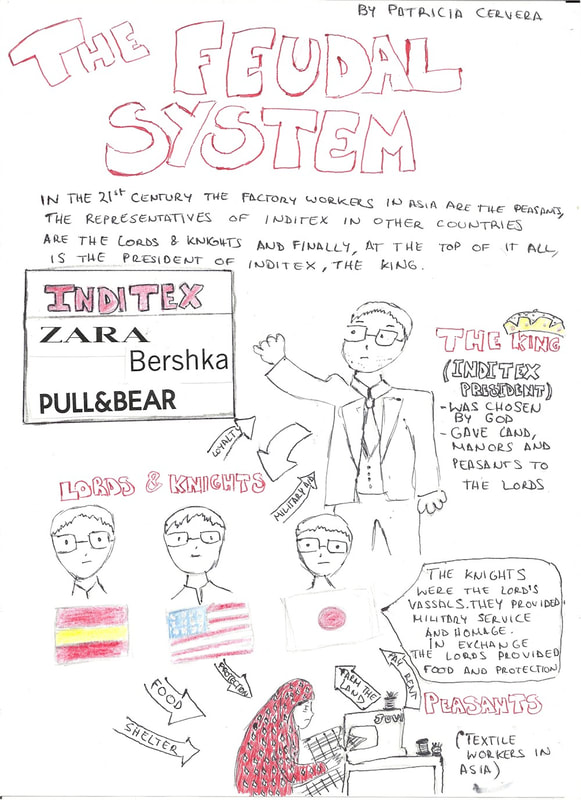Lesson 2 - Medieval warfare and the conquest of England
Big Questions
This is our first normal lesson. Having spent some time looking at different wars across time, now we're going dip into a series of nine case studies of particular conflicts at particular times. We will start in the Middle Ages at the Battle of Hastings in 1066 and end with the war in Vietnam which ended in 1975. If you thought seriously about why war is such an attractive theme for film makers, you will hopefully begin to understand why studying war through time provides such a useful window on the past. Here are some of my initial thoughts that will revisit after each case study.
This is our first normal lesson. Having spent some time looking at different wars across time, now we're going dip into a series of nine case studies of particular conflicts at particular times. We will start in the Middle Ages at the Battle of Hastings in 1066 and end with the war in Vietnam which ended in 1975. If you thought seriously about why war is such an attractive theme for film makers, you will hopefully begin to understand why studying war through time provides such a useful window on the past. Here are some of my initial thoughts that will revisit after each case study.
- Wars are exceptional events that challenge humans in extreme ways. We can learn a lot about humanity by studying how they fight wars (and make peace).
- Because they are exceptional events, wars tend to be well documented (lots of sources) and deliberately remembered. Our entry point to each war we study will be a memorialisation or commemoration of the event that still exists today. For example, for this first topic we'll be taking a close look at the Bayeux Tapestry which covers the events of 1066.
- Because they are extreme situations, wars tend to exaggerate and distort normal peacetime phenomena. For example, all governments use propaganda to control what their citizens think, it's just easier to see it in wartime.
- Although the causes of war can be quite similar over time, the ways wars are fought do change. How a society fights a war, will us a lot about the nature of that society. For example, how did European countries use their colonial soldiers in the First World War? or How did the French Revolution change the nature of Napoleon's army?
- Wars tend to be unusually important 'turning points' in human history. Wars can be such extreme events with such wide ranging consequences that the world is never quite the same afterwards. Unlike most other dates in history, no historian is going to argue that the consequences 1914 or 1939 were not important turning points.
- The way the world is today is largely a consequence of the wars of the last century and the history of those wars - and all wars - is written by the victors. How wars are remembered and commemorated is important. As Orwell wrote in 1984, "Who controls the past controls the future: who controls the present controls the past."
Heritage Object - The Bayeux Tapestry
This is our entry point into medieval warfare and as a commemoration of warfare there is nothing more famous. The Battle of Hastings of 1066 that it commemorates is one of the most significant in European history. It marked the last successful invasion of Britain, saw the introduction of Norman feudalism in the British isles and closely tied English and French history for the next few hundred years. The event even helps explain the richness of the English language and its curious mixture of Germanic Anglo-Saxon (70% words and grammar structure) and largely Norman-French for the rest. The Bayeux Tapestry has been part of UNESCO's 'Memory of the World' register since 2007.
This lesson begins with an investigation and close examination of the Bayeux Tapestry itself and then moves on to look at the impact of the Norman invasion more generally. BBC History - 5 facts about the Bayeux Tapestry
This lesson begins with an investigation and close examination of the Bayeux Tapestry itself and then moves on to look at the impact of the Norman invasion more generally. BBC History - 5 facts about the Bayeux Tapestry
|
|
|
Background
At the start of 1066 England was a country ruled by Anglo-Saxons, the northern Germanic tribes that had descended over Europe after the fall of the Roman Empire. When their King Edward the Confessor died in January 1066 he left no heir and the line of succession was not clear. The most powerful English lord, Harold Godwinson took the crown but was challenged by Vikings in the north and the French descendants of Vikings (Normans - 'Norsemen') from the south. The claim to the English throne by the leader of the Normans, William the Bastard, will be the focus of this lesson because it is central to the Bayeux Tapestry. This is the important scene.
At the start of 1066 England was a country ruled by Anglo-Saxons, the northern Germanic tribes that had descended over Europe after the fall of the Roman Empire. When their King Edward the Confessor died in January 1066 he left no heir and the line of succession was not clear. The most powerful English lord, Harold Godwinson took the crown but was challenged by Vikings in the north and the French descendants of Vikings (Normans - 'Norsemen') from the south. The claim to the English throne by the leader of the Normans, William the Bastard, will be the focus of this lesson because it is central to the Bayeux Tapestry. This is the important scene.
This is 1064, two years before the death of Edward the Confessor. On the left with the sword is William of Normandy, on the right with the moustache is Harold Godwinson. The text above says 'UBI HAROLD SACRAMENTUM FECIT WILLELMO DUCI', which as you know means 'Where Harold made an oath to Duke William'. An 'oath' is a promise. In this scene, Harold is shown swearing an oath to help William of Normandy to become king of England.
The consequences
There may be some historical doubt about whether William had a genuine right to the English crown, but the outcome of the Battle of Hastings and its significance is unquestioned.
|
Not only was the English Saxon king killed, but so also were a significant portion on the English ruling elite. How was England now to be governed? In the following years, William and the Normans used a mixture of coercion (e.g. castle building and burning down the towns of rebels), propaganda (e.g. Bayeux Tapestry and church building) and a new social system to impose their rule on Saxon England - the feudal system.
As Professor Robert Bartlett describes in the film opposite, the Normans may have arrived on their Viking ancestor's long boats but with their innovative use of horse riding, fighting knights pointed the way to the future. |
|
The Feudal System.
A medieval king like William in reality had considerably less power than a modern dictator. In the absence of modern communications - road, rail and telecommunications - a king depended on loyal, local military leaders to do the governing for him. After the Battle of Hastings, William was able to govern a hostile foreign land by rewarding the knights who had fought alongside him with land in England that they would govern on his behalf. This is known as the feudal system.
A medieval king like William in reality had considerably less power than a modern dictator. In the absence of modern communications - road, rail and telecommunications - a king depended on loyal, local military leaders to do the governing for him. After the Battle of Hastings, William was able to govern a hostile foreign land by rewarding the knights who had fought alongside him with land in England that they would govern on his behalf. This is known as the feudal system.
|
At the top of the feudal system was the king. Chosen by God, the king had a ‘divine right’ to rule. The king gave his lands and manors (or fiefs – which is perhaps where the word feudal comes from) to important lords or tenants–in-chief. In return for the fiefs, the lords or nobles became the king’s vassals and swore an oath of loyalty (fealty) and paid homage to him.
|
Homage consisted of the vassal surrendering himself to the lord, symbolised by his kneeling and giving his joined hands to the lord, who clasped them in his own, thus accepting the surrender. When Harold made his oath to William he was also paying homage.
|
|
We can still see the long-term consequences of William's feudal system in the English language we speak today. Most peasants were largely vegetarian, eating barley, oats and rye. (See film left) Meat was eaten when available, but certain types of meat were very much the preserve of the upper classes. This is reflected today in the difference between the name given to the animal (Saxon) and the name given to the meat (Norman French). Perhaps even more importantly, it is still reflected in the social inequalities that characterise British society today. |
Activity
Every history student should draw a diagram of the feudal system at some point in their history education. I remember drawing a very boring pyramid style, feudal system diagram when I was in school. You can draw a boring one if you want, or you can design something that interprets the concept of hierarchy much more imaginatively. Either way you need to be able to explain how feudalism worked, because I might ask you to do that in examination. Add your completed diagram and explanation to your OneNote. My old website has a collection of rather more interesting creations made by my students. Below are some of my favourites and it now includes some from students at Ecole Moser.
Every history student should draw a diagram of the feudal system at some point in their history education. I remember drawing a very boring pyramid style, feudal system diagram when I was in school. You can draw a boring one if you want, or you can design something that interprets the concept of hierarchy much more imaginatively. Either way you need to be able to explain how feudalism worked, because I might ask you to do that in examination. Add your completed diagram and explanation to your OneNote. My old website has a collection of rather more interesting creations made by my students. Below are some of my favourites and it now includes some from students at Ecole Moser.
When this is finished you can move on to the case study about the the events of 1066.
Extension and extras (Always optional)
The Knights
In return for fiefs (land), the vassals made promises, the most important of which was to serve the lord as a soldier for 40-60 days a year. It was the knights as lords of the manor or demesne who really controlled medieval Europe. The land they had been granted was theirs to pass on through inheritance to their eldest son. This guaranteed that authority was passed on from generation to generation and that a class of rulers emerged who owed their important social role to tradition. It also helped that the church encouraged the belief that the inequality of the feudal system was divinely ordained, that people were born into a 'station' in life chosen by God.
In return for fiefs (land), the vassals made promises, the most important of which was to serve the lord as a soldier for 40-60 days a year. It was the knights as lords of the manor or demesne who really controlled medieval Europe. The land they had been granted was theirs to pass on through inheritance to their eldest son. This guaranteed that authority was passed on from generation to generation and that a class of rulers emerged who owed their important social role to tradition. It also helped that the church encouraged the belief that the inequality of the feudal system was divinely ordained, that people were born into a 'station' in life chosen by God.
Training to be a knight.
When a boy was eight years old he was trained as a page. The boy was usually the son of a knight or of a member of the aristocracy. He spent most of his time strengthening his body, wrestling and riding horses. He also learned how to fight with a spear and a sword. He practiced against a wooden dummy called a quintain. At the age of fifteen or sixteen, a boy became a squire in service to a knight. His duties included dressing the knight in the morning, caring for the knight’s horse, and cleaning the knight’s armour and weapons.
When a boy was eight years old he was trained as a page. The boy was usually the son of a knight or of a member of the aristocracy. He spent most of his time strengthening his body, wrestling and riding horses. He also learned how to fight with a spear and a sword. He practiced against a wooden dummy called a quintain. At the age of fifteen or sixteen, a boy became a squire in service to a knight. His duties included dressing the knight in the morning, caring for the knight’s horse, and cleaning the knight’s armour and weapons.
|
|
He followed the knight to tournaments and assisted his lord on the battlefield. A squire also prepared himself by learning how to handle a sword and lance while wearing 20 kg of armour and riding a horse. When he was about twenty, a squire could become a knight after proving himself worthy. A lord would agree to knight him in a dubbing ceremony. A young man could also become a knight for valour in combat after a battle or sometimes before a battle to help him gain courage. Tournaments were an essential part of military and social life. These "war games" consisted of individual contests (jousts), and group combat. One of the most successful knights of the middle ages was William Marshall (see film) |
|
The problem of knights
Knights believed in the code of chivalry. They promised to defend the weak, be courteous to all women, be loyal to their king, and serve God at all times. Knights were expected to be humble before others, especially their superiors. However, the very fact that knights were trained as men of war meant that the code was not regularly followed. Even though they came from rich families, many knights were not their families' firstborn. They did not receive an inheritance. Thus they were little more than mercenaries. They plundered villages or cities that they captured. As we will see in the next lesson, when the Pope launched the First Crusade 1095, part of his reasoning was to get rid of the warring knights from Europe. |
|
















